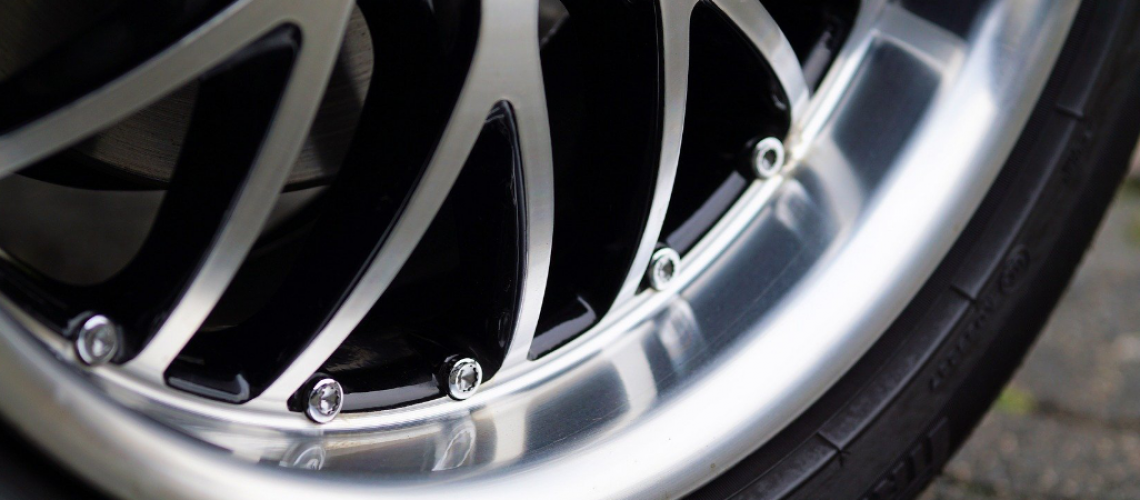There’s no quicker way to transform the look and feel of your ride than adding a new set of alloy wheels and tires.
Whether you’ve got performance on your mind or pure aesthetics, it’s important to know what you’re getting into. From understanding the terminology to the risks involved, we’ve got a guide showing what you need to know when you are ready to buy.
1. Tyre Sizes
All those letters and numbers on the side of the tire? Let’s use 255/35/R18 93H as an example. 255 represents the width of the tyre – 255 millimetres And has an aspect ratio of 35 – this being the sidewall measuring 35 per cent of the total section width.
A radius of R18 indicates it is an 18-inch wheel.
The 93 represents the amount of weight the tire can support
The ‘H’ is a speed rating, meaning it’s good for 130 mph in this case.
2. Hubs
This is the area that the wheel is attached to – your vehicle’s bolt pattern is the difference between wheels that fit and those that don’t. Each manufacturer tend to have different bolt patterns, some manufacturers do cross over but for the best part, you’ll have issues trying to fit some gleaming 18-inch alloys from a Mercedes on to a Ford Focus – they simply won’t match up. A bolt pattern of 5×100, then, would mean five wheel studs with a diameter between holes of 100 millimetres.
3. Fitment
This is where offset – the distance from the dead centre of the wheel to the mounting surface, and backspacing come into play – the latter means the distance from the back of the wheel to the mounting surface. A higher offset puts the mounting surface closer to the outside edge of the wheel, allowing the wheel to sit further inside the wheel well. This means more clearance between the outside edge of the tire and the fender, but less clearance between the inside edge of the tire and your vehicle’s suspension components. A lower offset, then, puts the mounting surface closer to the inside edge of the wheel, pushing the wheel outward for a wider stance. This, of course, means the potential for fender rub, which you don’t want because it will reduce the life of your tire.
Backspacing, meanwhile, is measured from the back of the wheel to the mounting surface. Similarly to offset, more backspacing means the wheel is tucked further into the wheel well and closer to the suspension components, increasing the risk of rubbing, while less backspacing means the wheel has more inside clearance.
4. Oversizing
Plus-sizing — adding wheels that are larger than stock — is enormously popular, and has its advantages and disadvantages. More grip or a sportier look but at the cost of a rougher ride.
When plus-sizing, from a 16- to 17-inch wheel, for example, the wheel diameter increases by an inch, but the overall diameter of the tire remains the same, this results in a shorter sidewall. A larger wheel diameter also means a larger wheel width. The combination of larger section width and shorter sidewall means a lower aspect ratio.
5. Size
As the diameter of the wheel increases, the price increases too but a common mistake is to not consider the additional cost of tyres. Unlike wheels, tires can cost a great deal as the size increases with top of the range tyres costing up to £200…each!
6. Don’t be cheap
It may be tempting to buy a new set of rims for £300, but buyer beware of poor construction. No one wants a cracked, bent or broken rim — or the damage it can cause to the rest of your vehicle — regardless of how enticing the price may be. There’s a fine line between bargain and bust, so choose carefully, because you often get what you pay for.
7. Used and Abused
The used market can be a great and cost-effective place to find wheels and tires, but it’s also an easy way for someone to dump damaged or stolen goods on you. Inspect wheels for cracks and bends and tires for excessive wear, punctures, and patches.
8. Choose Wisely
Those forged wheels wrapped in super-grippy Michelin tyres may get you excited, but are they worth bolting onto your Micra? There are plenty of great options out there to suit every need, so don’t make an expensive decision in haste and make sure to buy what you need, not what you want.


